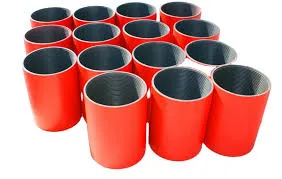- Afrikaans
- Albanian
- Amharic
- Arabic
- Armenian
- Azerbaijani
- Basque
- Belarusian
- Bengali
- Bosnian
- Bulgarian
- Catalan
- Cebuano
- Corsican
- Croatian
- Czech
- Danish
- Dutch
- English
- Esperanto
- Estonian
- Finnish
- French
- Frisian
- Galician
- Georgian
- German
- Greek
- Gujarati
- Haitian Creole
- hausa
- hawaiian
- Hebrew
- Hindi
- Miao
- Hungarian
- Icelandic
- igbo
- Indonesian
- irish
- Italian
- Japanese
- Javanese
- Kannada
- kazakh
- Khmer
- Rwandese
- Korean
- Kurdish
- Kyrgyz
- Lao
- Latin
- Latvian
- Lithuanian
- Luxembourgish
- Macedonian
- Malgashi
- Malay
- Malayalam
- Maltese
- Maori
- Marathi
- Mongolian
- Myanmar
- Nepali
- Norwegian
- Norwegian
- Occitan
- Pashto
- Persian
- Polish
- Portuguese
- Punjabi
- Romanian
- Russian
- Samoan
- Scottish Gaelic
- Serbian
- Sesotho
- Shona
- Sindhi
- Sinhala
- Slovak
- Slovenian
- Somali
- Spanish
- Sundanese
- Swahili
- Swedish
- Tagalog
- Tajik
- Tamil
- Tatar
- Telugu
- Thai
- Turkish
- Turkmen
- Ukrainian
- Urdu
- Uighur
- Uzbek
- Vietnamese
- Welsh
- Bantu
- Yiddish
- Yoruba
- Zulu
pup joint oil and gas
Pup Joint Oil and Gas An Essential Component of the Industry
In the complex world of oil and gas exploration and production, specific components play a crucial role in ensuring the efficiency and effectiveness of operations. One such component is the pup joint, a vital piece of equipment that is often overlooked but essential for various applications in the petroleum industry.
Pup joints are short lengths of pipe used in the oil and gas sector, primarily to adjust the length of the tubing or casing string. Their primary function is to connect various sections of pipe, allowing operators to achieve the desired total depth or fit specific equipment configurations. Typically, pup joints are available in several lengths, ranging from 2 to 10 feet, with the most common lengths being 2 or 3 feet. This variety offers flexibility in assembly, allowing engineers to fine-tune operations to meet specific requirements on site.
Pup Joint Oil and Gas An Essential Component of the Industry
Moreover, pup joints are crucial in managing the flow of oil and gas. When installed as part of a tubing or casing string, they help maintain the integrity of the entire system. By allowing for the adjustment of lengths, pup joints also contribute to optimal wellbore designs, ensuring that the flow of hydrocarbons is as efficient as possible. This efficiency is paramount, especially given the increasingly competitive nature of the oil and gas industry, where operators must minimize costs while maximizing production.
pup joint oil and gas

The significance of pup joints is further highlighted when considering the operational challenges faced by oil and gas companies. As reserves become deeper and harder to reach, the need for precision engineering becomes increasingly critical. Pup joints enable engineers to customize their setups, accommodating varying well depths and configurations. This adaptability reduces downtime and operational delays, allowing companies to respond swiftly to market demands.
Additionally, pup joints are instrumental during intervention operations. They can be employed when conducting maintenance or when replacing sections of tubing or casing. In such scenarios, pup joints provide the flexibility needed to ensure that work can be performed efficiently without compromising safety. They facilitate the addition or removal of pipe sections without requiring extensive rig modifications or lengthy installation processes.
Environmental considerations are increasingly coming to the forefront of the oil and gas industry. Employing high-quality pup joints reduces the likelihood of leaks and failures, which can have significant environmental repercussions. By ensuring the integrity of well systems, pup joints contribute to safer operations, ultimately working towards more sustainable practices within the industry.
In conclusion, pup joints are more than mere accessories in the oil and gas industry; they are essential components that enhance operational flexibility, safety, and efficiency. As the industry continues to evolve, the role of pup joints will only become more significant, enabling companies to navigate the complexities of modern oil and gas production effectively. As such, understanding and utilizing pup joints correctly will remain paramount for engineers and operators dedicated to optimizing their operations and maximizing the potential of hydrocarbon resources.
-
Tubing Pup Joints: Essential Components for Oil and Gas OperationsNewsJul.10,2025
-
Pup Joints: Essential Components for Reliable Drilling OperationsNewsJul.10,2025
-
Pipe Couplings: Connecting Your World EfficientlyNewsJul.10,2025
-
Mastering Oilfield Operations with Quality Tubing and CasingNewsJul.10,2025
-
High-Quality Casing Couplings for Every NeedNewsJul.10,2025
-
Boost Your Drilling Efficiency with Premium Crossover Tools & Seating NipplesNewsJul.10,2025







